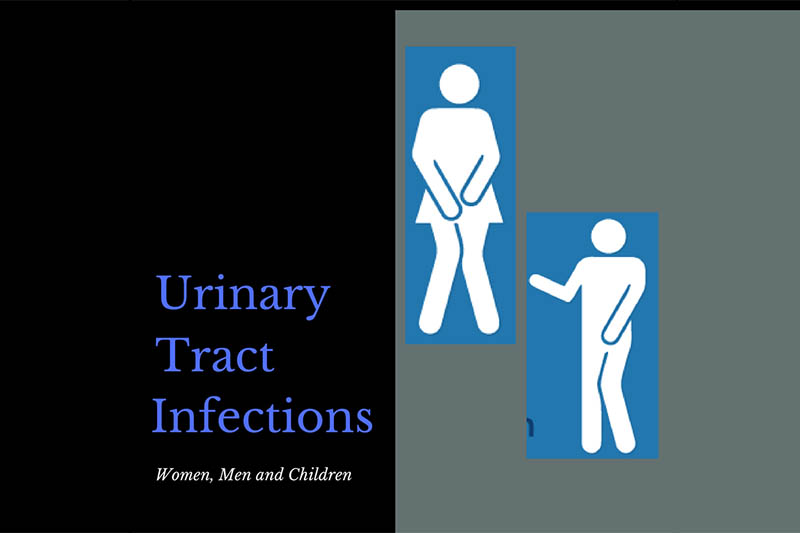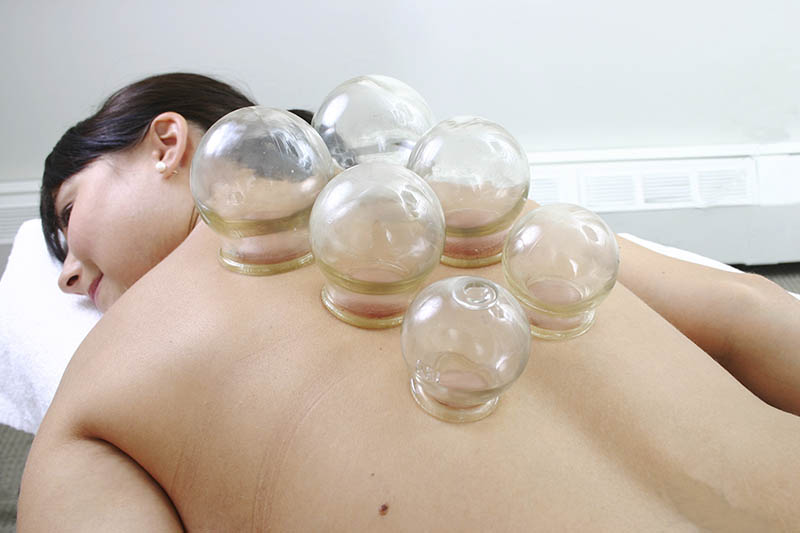
What are UTI’s? Urinary Tract Infections
Do you… Frequently or urgently need to urinate Often only pass small amounts of urine Have Pain or burning sensation when urinating These can be symptoms of urinary tract infections. There

Cupping therapy is an ancient Chinese form of alternative medicine in which a local suction is created on the skin; practitioners believe this mobilizes blood flow in order to promote healing
Through either heat or suction, the skin is gently drawn upwards by creating a vacuum in a cup over the target area of the skin. The cup stays in place for five to fifteen minutes. It is believed by some to help treat pain, deep scar tissues in the muscles and connective tissue, muscle knots, and swelling, however the efficacy of this has been questioned
There is reason to believe the practice dates from as early as 3000 BC. The Ebers Papyrus, written c. 1550 BC and one of the oldest medical textbooks in the world, describes the Egyptians’ use of cupping.[citation needed] Archaeologists have found evidence in China of cupping dating back to 1000 BC. In ancient Greece, Hippocrates (c. 400 BC) used cupping for internal disease and structural problems. This method in multiple forms spread into medicine throughout Asian and European civilizations.[citation needed] In 1465, cupping was recommended Serefeddin Sabuncuoglu, a Turkish surgeon, and called it mihceme.
Broadly speaking there are two types of cupping: dry cupping and bleeding or wet cupping (controlled bleeding) with wet cupping being more common. The British Cupping Society (BCS), an organization promoting the practice, teaches both. As a general rule, wet cupping provides a more “curative-treatment approach” to patient management whereas dry cupping appeals more to a “therapeutic and relaxation approach”. Preference varies with practitioners and cultures.
The cupping procedure commonly involves creating a small area of low air pressure next to the skin. However, there is variety in the tools used, the method of creating the low pressure, and the procedures followed during the treatment.
The cups can be various shapes including balls or bells, and may range in size from 1 to 3 inches (25 to 76 mm) across the opening. Plastic and glass are the most common materials used today, replacing the horn, pottery, bronze and bamboo cups used in earlier times. The low air pressure required may be created by heating the cup or the air inside it with an open flame or a bath in hot scented oils, then placing it against the skin. As the air inside the cup cools, it contracts and draws the skin slightly inside. More recently, vacuum can be created with a mechanical suction pump acting through a valve located at the top of the cup. Rubber cups are also available that squeeze the air out and adapt to uneven or bony surface.
In practice, cups are normally used only on softer tissue that can form a good seal with the edge of the cup. They may be used singly or with many to cover a larger area. They may be used by themselves or placed over an acupuncture needle. Skin may be lubricated, allowing the cup to move across the skin slowly.
Depending on the specific treatment, skin marking is common after the cups are removed. This may be a simple red ring that disappears quickly, the discoloration left by the cups is normally from bruising especially if dragging the cups while suctioned from one place to another to break down muscle fiber. Usually treatments are not painful.
A woman receiving fire cupping at a roadside business in Haikou, Hainan, China.
Fire cupping involves soaking a cotton ball in 70% alcohol. The cotton is then clamped by a pair of forceps and lit via match or lighter. The flaming cotton ball is then, in one fluid motion, placed into the cup, quickly removed, and the cup is placed on the skin. By adding fire to the inside of the cup, oxygen is removed (which is replaced with an equal volume of carbon dioxide) and a small amount of suction is created by the air cooling down again and contracting. Massage oil may be applied to create a better seal as well as allow the cups to glide over muscle groups (e.g. trapezius, erectors, latisimus dorsi, etc.) in an act called “moving cupping”. Dark circles may appear where the cups were placed due to rupture of the capillaries just under the skin, but are not the same as a bruise caused by blunt-force trauma.
While the history of wet cupping may date back thousands of years, the first documented uses are found in the teachings of the Islamic prophet Muhammad. According to Muhammad al-Bukhari, Muslim ibn al-Hajjaj Nishapuri and Ahmad ibn Hanbal, Muhammad approved of the Hijama (cupping) treatment.
A number of hadith support its recommendation and use by Muhammad. As a result, the practice of cupping therapy has survived in Muslim countries. Today, wet cupping is a popular remedy practiced in many parts of the Muslim world
Alternatively, mild suction is created using a cup and a pump (or heat suction) on the selected area and left for about three minutes. The cup is then removed and small superficial skin incisions are made using a cupping scalpel. A second suction is used to carefully draw out a small quantity of blood. The procedure was piloted and developed by Ullah et al 2005 and has been endorsed by the British Cupping Society which aims to promote, protect and develop professional standards in cupping therapy.
In Finland, wet cupping has been done at least since the 15th century, and it is done traditionally in saunas. The cupping cups were made of cattle horns with a valve mechanism in it to create an partial vacuum by sucking the air out. Cupping is still used in Finland as an alternative medicine.
According to traditional Chinese medicine (TCM) cupping is a method of creating a vacuum on the patient’s skin to dispel stagnation — stagnant blood and lymph, thereby improving qi flow— to treat respiratory diseases such as the common cold, pneumonia and bronchitis. Cupping also is used on back, neck, shoulder and other musculoskeletal conditions. Its advocates say it has other applications, as well. Cupping is not advised over skin ulcers or to the abdominal or sacral regions of pregnant women.
New silicone therapy cups are claimed to alleviate bruising associated with traditional cupping. The cups are easier to use and are pliable, unlike glass or plastic, allowing for home use. Due to the lack of bruising and overall comfort, silicone cups are mainly smaller in size and used for facial cupping. Hydration before and after the therapy and general massage can also help reduce the bruising from cupping.
Cupping is claimed to treat a broad range of medical conditions such as blood disorders (anemia, hemophilia), rheumatic diseases (arthritic joint and muscular conditions), fertility and gynecological disorders, and skin problems (eczema, acne), and is claimed by proponents to help general physical and psychological well-being.
As with many forms of manual therapy, the effectiveness of cupping is difficult to determine as it virtually impossible to construct a double blind or placebo-controlled clinical trial. Developing a “sham” manual therapy for cupping would be difficult and it would be impossible to blind the therapist.
In their 2008 book Trick or Treatment, Simon Singh and Edzard Ernst write that no evidence exists of any beneficial effects of cupping for any medical condition.
Cupping is widely used as an alternative treatment for cancer. However, the American Cancer Society notes that “available scientific evidence does not support claims that cupping has any health benefits” and also that the treatment carries a small risk of burns.
A 2012 review of the evidence in an article published in PLOS ONE said that studies appeared to show that cupping therapy was effective for treating a number of conditions, but that “nearly all included trials were evaluated as high risk of bias” – better designed studies would be needed in order to reach definitive conclusions.
Very few scientific studies have been conducted on the validity of cupping as an alternative medical practice. In fact, a significant amount of studies either do not support cupping practices or are unable to reach a conclusion concerning its effectiveness.
Traditional Persian medicine in Iran takes advantage of wet cupping practices, for the belief that cupping with scarification may eliminate the scar tissue, and cupping without scarification would cleanse the body through the organs (Nimrouzi et al., 2014) Research suggests that this practice is indeed harmful, especially to thin or obese patients. It may be noted that individuals of profound interest in the practice are religious and seek purification. According to Jack Raso (1997) cupping results in capillary expansion, excessive fluid accumulation in tissues, and the rupture of blood vessels. Although bruising caused by this practice is common, minor, and temporary, continuation may cause burns of the skin. Individuals have been performing the action for over 3,000 years, it is still yet to be scientifically proven. The practice is performed unsupervised, without any medical background, and often indicates more risks than obvious benefits.
In a recent controlled study by Cho and colleagues (2014) traditional East-Asian medical practices were evaluated in terms of effectiveness against lower back pain. Cupping was evaluated by the current Clinical Practice Guidelines (CPGs) and with evidence from current systematic reviews and meta-analyses. They found that out of thirteen CPGs, only one recommended cupping. The researchers therefore weakly recommended cupping for both (sub) acute and chronic lower back pain. Due to a belief in its benefits stemming from traditional uses, it may be that cupping induces a placebo effect rather than any direct medical benefits.

Do you… Frequently or urgently need to urinate Often only pass small amounts of urine Have Pain or burning sensation when urinating These can be symptoms of urinary tract infections. There
Disclaimer – Our intent is not to diagnosis but to offer information on therapy choices and practitioners. Information on this site is intended general educational purposes only. Any statements made are carefully referenced and any information, products or services discussed are not intended to diagnose, cure, treat or prevent any disease or illness. Please consult a healthcare practitioner before making a choice.